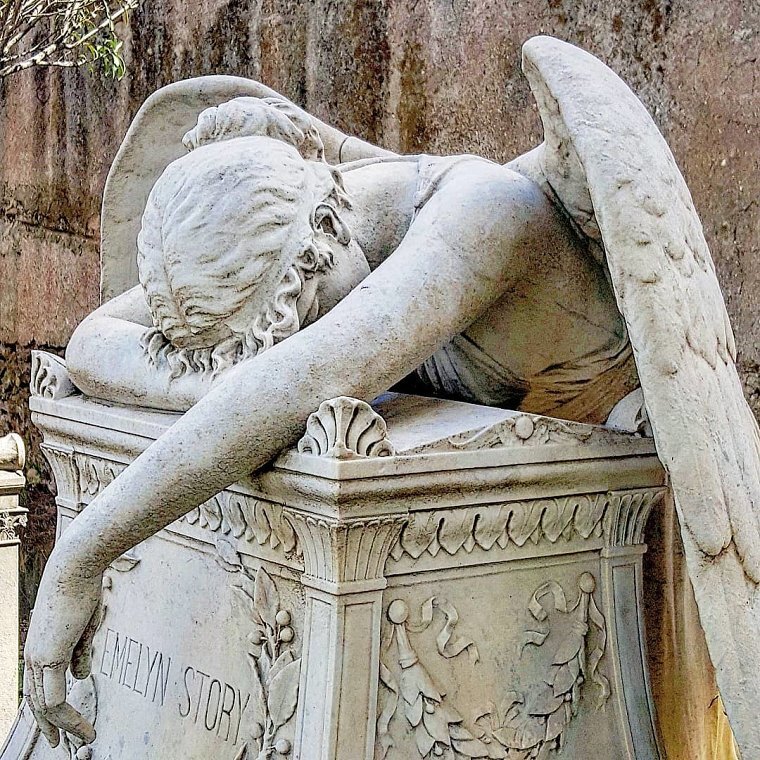To be able to write in the pages of this magazine is an honour and a great pleasure for me. On this occasion I would like to follow in the footsteps of the article I wrote last month, dealing with a subject dear to me, which was the subject of an examination during my studies in history at the University of Pisa: 'The Anthropology of Death and Mourning'.
'The gestures of grief'
Rituals are an essential component of life and daily existence is marked by a multitude of 'ritual gestures'.
Death is part of life. This euphemism, out of tune as it may seem, encapsulates the cycle of life: one is born, grows up, lives as an adult, grows old and dies. Science has not yet arrived at the secret of immortality...and perhaps it is for the best. Talking about 'death' is difficult, there is an aura of mystery surrounding it, which disconcerts us because it places us at the centre of an architecture whose boundaries we do not know, and the unknown scares us....
We remain speechless about the 'after', we believe that everything is over, that the separation is in no way surmountable, but this is completely normal: it is the daily fear of death and separation. A fear that affects everyone, even people who are believers, or at any rate linked to a tradition that should allow them to deal with these issues.
The answers to all this are to be found in the mind, heart and actions, and manifest themselves in the tendency of some people to adopt negative attitudes that do not facilitate the elaboration of grief, or constructive attitudes that favour a healthy elaboration of grief. The difficulties in 'managing' the mourning event, (understandable I would say), and in processing grief, lead to a disorientation that results in a search for 'actions' that convey grief, are in some way an outlet for it. Attempts are made to make it public, evident, visible through objects, focusing on aspects that are intended to honour the memory of the deceased, to communicate something of his past, to emphasise his importance to family members.
Our daily existence is punctuated by a myriad of rituals, without which there would be chaos. Indeed, ritual is an essential component of life, a code of behaviour that regulates individual and social history, and death has always been a special place for the expression of rituality, both socially and religiously.
On the social side, death is accompanied by funeral announcements, the expression of condolences to family and friends, a serious and appropriate bearing, and a mode of dress appropriate to the circumstances. From the religious point of view, rituality includes the priest's visit to the family, the celebration of the funeral, the burial rite, the suffrage masses on the trigesimo day or the anniversary of the death, and so on. But beyond these practices there are other particular rites that people resort to in order to gain comfort or alleviate anguish.
Some people, for instance, do not start the day without kissing the photo of their loved one, or carry it with them everywhere as a sign of closeness and protection. In some cultural contexts, the practice persists of widows who wear black for years, sometimes until death, as evidence of their mournful condition. Many frequently go to the cemetery to bring a flower to their loved one's grave or recite a prayer, and take comfort from this. There is also the instinctive search for a last contact with the one who has died in the very ground on which he or she left, but it is obvious that this instinct to make sacred the place where a life ended, that square metre of pavement, that post, that tree, knows nothing of all this, goes on groping, almost reinventing the cult of the dead. And the cemetery becomes the whole city, with its streets, its random places: grief calls grief from one pole to another, from one tree to another, coming out into the open, occupying the public scene again.
Mourning repressed, emptied, the victim of an extremist vitalism, returns in the form of the cult of 'something' that no longer coincides with the presence of a body, but with a spirit, with the very soul of those who have gone. It is as if one can once again speak, tell. The roadside covered with flowers, photographs, soft toys, tells us, through images and objects, what has happened, without the need to add anything else. He or she, they are alive every day there where every day they really lived, not relegated to some island of the dead, even if it is the noblest cemetery, the most sumptuous tomb, and the living are with them not in the forced parenthesis of a funeral visit, but always, while they go shopping, while they look out of the window stopped at the traffic lights. A new concreteness, a new way of making the unspeakable of death social, after all, everyone does what they want with their grief.
It must be added, however, that not all rituals are healthy, and it is necessary to evaluate whether they favour or block the elaboration of grief, but it is not my intention to judge them now. I do think, however, that ritualism becomes a hindrance in mourning when it is obsessive and when it masks feelings that have remained unresolved. Rituals are only bridges, crossing the water that frightens us. It is up to us to decide when to go down this road, assessing our needs and expectations.
"Two beautiful things the world has: love and death"
(G.Leopardi)
An ancient binomial that Leopardi inserts in the incipit of his own poem: 'Love and Death'.
Brothers who identify themselves with the most beautiful things in the universe. The first gives the greatest pleasure that man can experience; the second frees from all evil!

